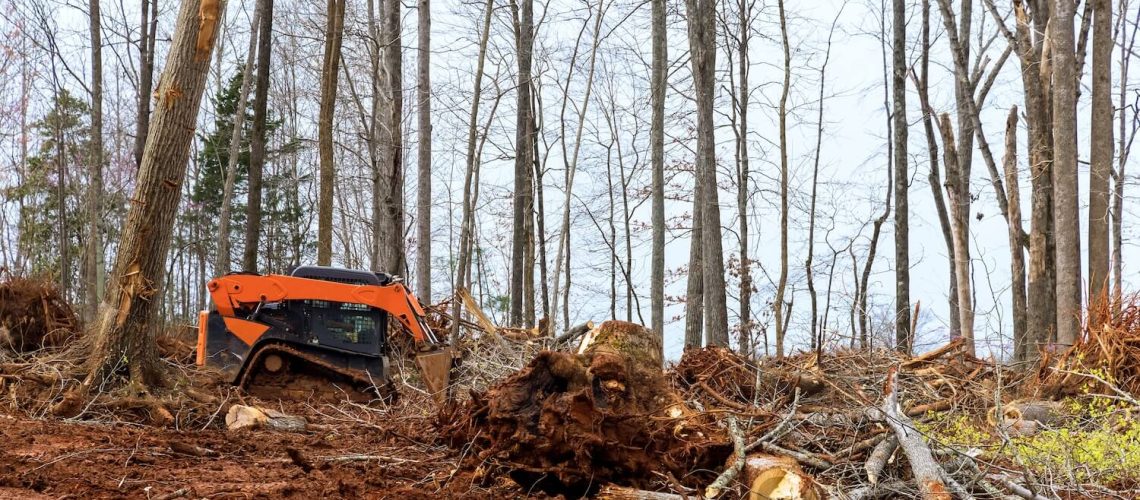In the face of growing environmental concerns, the methods by which we manage and utilize our land resources have come under intense scrutiny. Traditional land clearing practices, often characterized by indiscriminate clearing of forests and natural habitats, have led to widespread environmental degradation, loss of biodiversity, and increased greenhouse gas emissions. As a response to these challenges, sustainable land management practices, including responsible land clearing services, are emerging as the future of land use.
Understanding Traditional Land Clearing
Traditional land clearing typically involves the removal of trees, vegetation, and natural obstacles to prepare land for agricultural, residential, or commercial development. This method has historically been driven by short-term economic gains, often overlooking the long-term environmental consequences.
- Environmental Degradation: Clearing large swathes of land disrupts ecosystems, leading to soil erosion, loss of biodiversity, and destruction of habitats for numerous plant and animal species.
- Carbon Emissions: Deforestation and burning of cleared vegetation release significant amounts of carbon dioxide (CO2) into the atmosphere, contributing to global climate change.
- Water Quality Issues: Without the natural vegetation to act as a buffer, soil erosion can lead to sedimentation of water bodies, compromising water quality and aquatic habitats.
The Rise of Sustainable Land Clearing Services
Recognizing the detrimental impacts of traditional land clearing practices, the demand for sustainable land management solutions has been on the rise. Sustainable land clearing services aim to minimize environmental harm while effectively preparing land for development.
Selective Clearing
Unlike indiscriminate clearing, selective clearing focuses on removing only specific trees and vegetation, preserving the natural landscape as much as possible. This approach helps maintain soil stability, retain biodiversity, and reduce carbon emissions.
Mechanical Methods
Modern land clearing equipment is designed to minimize ground disturbance and soil compaction. Advanced machinery can selectively remove trees and vegetation without damaging the surrounding environment.
Revegetation and Restoration
After clearing, revegetation and restoration efforts are undertaken to replant native species, restore habitats, and enhance ecosystem resilience. This not only offsets the environmental impact of land clearing but also contributes to long-term sustainability.
Benefits of Sustainable Land Clearing Services
Adopting sustainable land clearing practices offers a myriad of benefits that extend beyond environmental conservation:
- Enhanced Soil Health: By minimizing soil disturbance and erosion, sustainable land clearing helps maintain soil structure, fertility, and productivity, ensuring better long-term agricultural yields.
- Cost Savings: While initial investment in sustainable land clearing services may be higher, the long-term cost savings associated with reduced soil erosion, maintenance, and environmental mitigation make it a financially viable option.
- Social Responsibility: Sustainable land management practices resonate with growing consumer awareness and demand for socially responsible and environmentally friendly development. Businesses and individuals that prioritize sustainability are more likely to gain public trust and support.
The Economic Case for Sustainable Land Clearing Services
While the environmental benefits of sustainable land clearing services are significant, there is also a compelling economic case to be made for adopting sustainable land management practices:
Market Demand for Sustainable Development
With growing consumer awareness and demand for sustainable products and services, businesses that prioritize sustainability are well-positioned to capitalize on market opportunities, gain a competitive advantage, and achieve long-term success.
Cost Savings and Efficiency
Sustainable land clearing practices can result in substantial cost savings by reducing soil erosion, minimizing environmental mitigation requirements, and enhancing the long-term productivity and value of land assets.
Investment and Financing Opportunities
The transition to sustainable land management presents attractive investment and financing opportunities for investors, financial institutions, and development agencies interested in supporting environmentally responsible and socially beneficial projects.
How to Hire a Sustainable Land Clearing Company
Choosing the right land clearing company is a critical step in ensuring that your land management project aligns with sustainable practices. Here are some key considerations to help you make an informed decision:
1. Research and Due Diligence
- Credentials and Certifications: Look for companies that have relevant certifications and credentials in sustainable land management and environmental stewardship. Certifications from recognized organizations demonstrate a commitment to adhering to industry best practices and standards.
- Track Record and Experience: Evaluate the company’s track record and experience in executing sustainable land clearing projects. Customer reviews, case studies, and references can provide valuable insights into the company’s capabilities, reliability, and performance.
- Technological Capabilities: Inquire about the company’s technological capabilities and equipment. Advanced technologies, such as GPS-guided equipment and remote sensing tools, are indicative of a company’s commitment to efficiency, precision, and minimizing environmental impact.
2. Environmental Compliance and Regulations
- Compliance with Laws and Regulations: Ensure that the company complies with local, state, and federal laws, regulations, and environmental standards governing land clearing and management. A reputable company will be well-versed in relevant environmental regulations and demonstrate a commitment to compliance and responsible stewardship.
- Environmental Impact Assessment: Request an environmental impact assessment to evaluate the potential environmental impacts of the land clearing activities and identify mitigation measures to minimize adverse effects on ecosystems, biodiversity, and natural resources.
3. Sustainability Practices and Policies
- Selective Clearing Techniques: Inquire about the company’s approach to land clearing and their use of selective clearing techniques to minimize environmental damage and preserve native vegetation, soil health, and biodiversity.
- Revegetation and Restoration: Ask about the company’s revegetation and restoration practices and their commitment to replanting native species, restoring habitats, and enhancing ecosystem resilience following land clearing activities.
- Waste Management and Recycling: Inquire about the company’s waste management and recycling practices. Sustainable land clearing companies should prioritize recycling and reuse of cleared vegetation and organic waste materials to minimize landfill waste and reduce carbon emissions.
4. Communication and Collaboration
- Open Communication: Establish clear lines of communication with the company and ensure that they are responsive, transparent, and collaborative throughout the planning, execution, and completion of the land clearing project.
- Stakeholder Engagement: Encourage stakeholder engagement and participation in land management decisions to foster a collaborative and inclusive approach that aligns with community values, priorities, and sustainability goals.
5. Cost and Financial Considerations
- Cost Transparency: Request a detailed and transparent cost estimate that outlines the scope of work, labor, materials, equipment, and any additional charges or fees associated with the land clearing project. Compare quotes from multiple companies to ensure competitive pricing and value for money.
- Payment Terms and Financing Options: Discuss payment terms, financing options, and flexible payment plans with the company to accommodate your budget and financial needs while ensuring the quality and sustainability of the land clearing services provided.
Conclusion
The future of land management lies in sustainable practices that balance economic development with environmental conservation. Sustainable land clearing services offer a viable solution to address the environmental challenges associated with traditional land clearing while supporting responsible and sustainable development.
By adopting selective clearing methods, utilizing advanced land clearing equipment, and prioritizing revegetation and restoration efforts, we can minimize environmental degradation, preserve biodiversity, and contribute to global efforts to combat climate change.
As awareness grows and policy frameworks evolve, the demand for sustainable land clearing services is expected to increase, driving innovation, investment, and collaboration across the land management sector. Embracing sustainable land management practices today is not just an environmental imperative but a strategic investment in a more resilient, prosperous, and sustainable future for all.

